- Clone
- NIM-R8 (See other available formats)
- Regulatory Status
- RUO
- Other Names
- Hermes, Pgp-1, H-CAM, HUTCH-1, ECMR III, gp85, Ly-24
- Isotype
- Rat IgG2a, κ
- Ave. Rating
- Submit a Review
- Product Citations
- publications
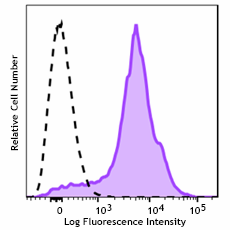
-

C57BL/6 mouse splenocytes were stained with anti-mouse CD44 (clone NIM-R8) Alexa Fluor® 700 (filled histogram) or rat IgG2a, κ Alexa Fluor® 700 isotype control (open histogram).
| Cat # | Size | Price | Quantity Check Availability | Save | ||
|---|---|---|---|---|---|---|
| 156009 | 25 µg | 76€ | ||||
| 156010 | 100 µg | 172€ | ||||
CD44 is a 80-95 kD glycoprotein also known as Hermes, Pgp1, H-CAM, or HUTCH. It is expressed on all leukocytes, endothelial cells, hepatocytes, and mesenchymal cells. As B and T cells become activated or progress to the memory stage, CD44 expression increases from low or mid levels to high levels. Thus, CD44 has been reported to be a valuable marker for memory cell subsets. High CD44 expression on Treg cells has been associated with potent suppressive function via high production of IL-10. CD44 is an adhesion molecule involved in leukocyte attachment to and rolling on endothelial cells, homing to peripheral lymphoid organs and to the sites of inflammation, and leukocyte aggregation.
Product DetailsProduct Details
- Verified Reactivity
- Mouse
- Antibody Type
- Monoclonal
- Host Species
- Rat
- Formulation
- Phosphate-buffered solution, pH 7.2, containing 0.09% sodium azide
- Preparation
- The antibody was purified by affinity chromatography and conjugated with Alexa Fluor® 700 under optimal conditions.
- Concentration
- 0.5 mg/mL
- Storage & Handling
- The antibody solution should be stored undiluted between 2°C and 8°C, and protected from prolonged exposure to light. Do not freeze.
- Application
-
FC - Quality tested
- Recommended Usage
-
Each lot of this antibody is quality control tested by immunofluorescent staining with flow cytometric analysis. For flow cytometric staining, the suggested use of this reagent is ≤ 1.0 µg per million cells in 100 µL volume. It is recommended that the reagent be titrated for optimal performance for each application.
* Alexa Fluor® 700 has a maximum emission of 719 nm when it is excited at 633 nm / 635 nm. Prior to using Alexa Fluor® 700 conjugate for flow cytometric analysis, please verify your flow cytometer's capability of exciting and detecting the fluorochrome.
Alexa Fluor® and Pacific Blue™ are trademarks of Life Technologies Corporation.
View full statement regarding label licenses - Excitation Laser
-
Red Laser (633 nm)
- Application Notes
-
From in-house testing, this clone does not block IM7. This clone has been used to induce dendrite formation in B cells.1
-
Application References
(PubMed link indicates BioLegend citation) -
- Santos-Argumedo L, et al. 1997. Immunology. 90:147 (FC, Agonist)
- RRID
-
AB_3068217 (BioLegend Cat. No. 156009)
AB_3068217 (BioLegend Cat. No. 156010)
Antigen Details
- Structure
- Variable splicing of CD44 gene generates many CD44 isoforms, 80-95 kD
- Distribution
-
All leukocytes, epithelial cells, endothelial cells, hepatocytes, mesenchymal cells
- Function
- Leukocyte attachment and rolling on endothelial cells, stromal cells and ECM
- Ligand/Receptor
- Hyaluronan, MIP-1β, fibronectin, collagen
- Cell Type
- B cells, Endothelial cells, Epithelial cells, Leukocytes, Mesenchymal cells
- Biology Area
- Immunology
- Molecular Family
- Adhesion Molecules, CD Molecules
- Antigen References
-
- Barclay AN, et al. 1997. The Leukocyte Antigen FactsBook Academic Press.
- Haynes BF, et al. 1991. Cancer Cells 3:347.
- Goldstein LA, et al. 1989. Cell 56:1063.
- Mikecz K, et al. 1995. Nat. Med. 1:558.
- Hegde V, et al. 2008. J. Leukocyte Biol. 84:134.
- Liu T, et al. 2009. Biol. Direct 4:40.
- Gene ID
- 12505 View all products for this Gene ID
- UniProt
- View information about CD44 on UniProt.org
Related FAQs
Other Formats
View All CD44 Reagents Request Custom Conjugation| Description | Clone | Applications |
|---|---|---|
| Purified anti-mouse CD44 | NIM-R8 | FC |
| APC/Fire 750™ anti-mouse CD44 | NIM-R8 | FC |
| Pacific Blue™ anti-mouse CD44 | NIM-R8 | FC |
| FITC anti-mouse CD44 | NIM-R8 | FC |
| Alexa Fluor® 700 anti-mouse CD44 | NIM-R8 | FC |
Customers Also Purchased


Compare Data Across All Formats
This data display is provided for general comparisons between formats.
Your actual data may vary due to variations in samples, target cells, instruments and their settings, staining conditions, and other factors.
If you need assistance with selecting the best format contact our expert technical support team.
-
Purified anti-mouse CD44

C57BL/6 mouse splenocytes were stained with purified CD44 (c... -
APC/Fire 750™ anti-mouse CD44
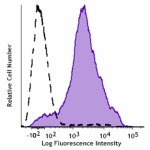
C57BL/6 mouse splenocytes were stained with anti-mouse CD44 ... -
Pacific Blue™ anti-mouse CD44
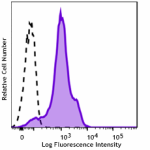
C57BL/6 mouse splenocytes were stained with anti-mouse CD44 ... -
FITC anti-mouse CD44

C57 mouse splenocytes were stained with anti-mouse CD3 APC a... -
Alexa Fluor® 700 anti-mouse CD44
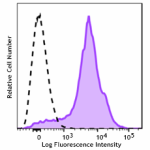
C57BL/6 mouse splenocytes were stained with anti-mouse CD44 ...
 Login / Register
Login / Register 










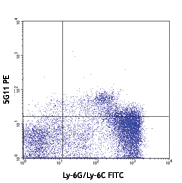
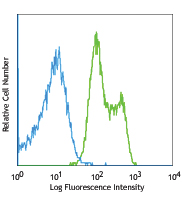



Follow Us